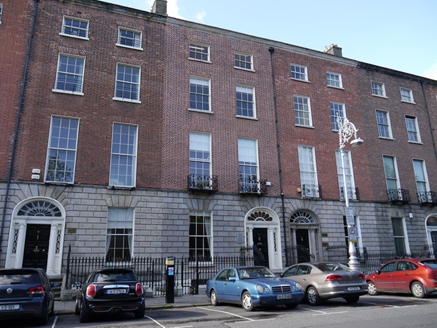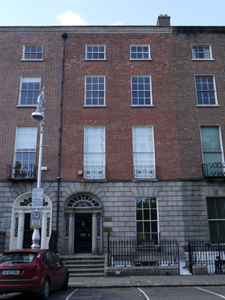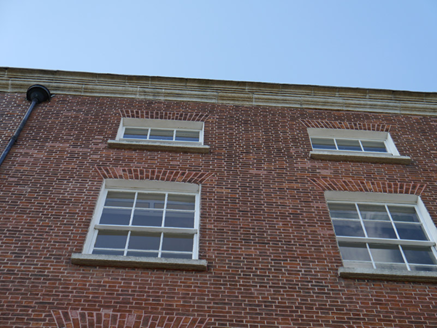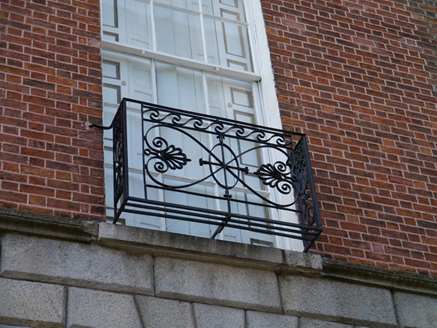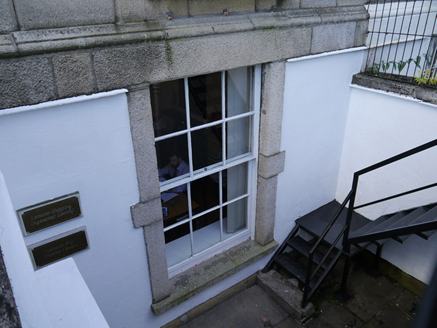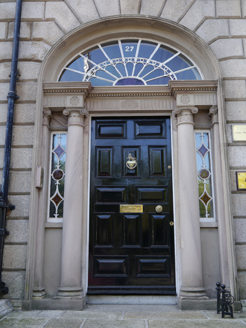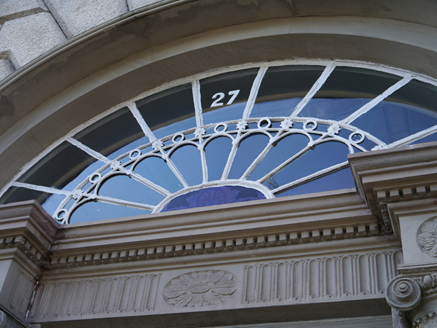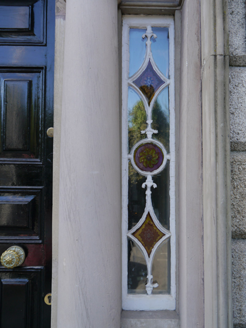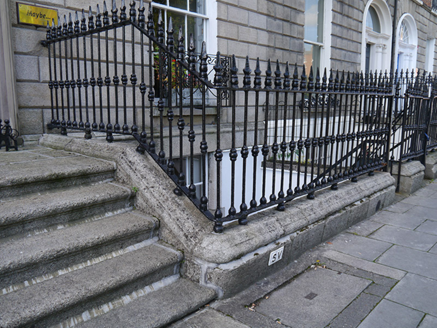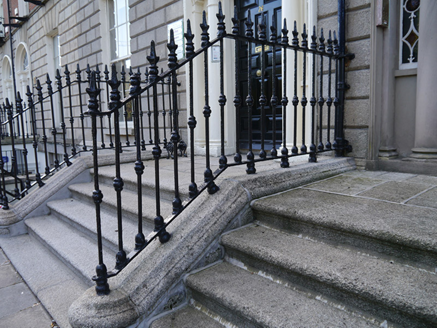Survey Data
Reg No
50930220
Rating
Regional
Categories of Special Interest
Architectural, Artistic
Original Use
House
In Use As
Office
Date
1820 - 1830
Coordinates
316458, 233021
Date Recorded
15/09/2015
Date Updated
--/--/--
Description
Terraced two-bay four-storey over basement former townhouse, dated 1824, with two-storey over basement return to rear (south). Now in use as offices. M-profiled roof, concealed by ashlar granite parapet with moulded granite cornice and coping, rendered chimneystacks to west party wall with yellow clay pots, parapet gutters and replacement cast-iron downpipe and hopper to east of principal elevation (north). Red brick walling in Flemish bond over rusticated granite walling to ground floor level, smooth rendered walling to basement beneath moulded granite stringcourse to lintel level. Square-headed window openings with brick voussoirs, rendered reveals and replacement masonry sills; granite surround to basement, moulded sill course to first floor windows with replacement balconettes. Largely six-over-six sliding timber sliding sash windows, three-over-three to third floor, nine-over-nine to first floor. Elliptical-headed stone door opening to principal elevation (north) with moulded reveals and Ionic columns supporting decorative frieze and dentilled cornice, flanked by decorative leaded sidelights and recumbent pilasters, surmounted by decorative fanlight over twelve-panelled timber door with brass furniture. Granite entrance platform with cast- and wrought-iron boot scraper, approached by five bull-nosed granite steps, flanked by cast-iron railings topped with arrow-headed finials over granite plinth, enclosing basement area. Steel steps to basement level. Coal-hole cover to pavement. Mews building to rear with extension to south, rising above rubble limestone boundary wall on Kingram Place. Ashlar limestone elliptical-headed carriage-arch with brick voussoirs over double-leaf timber-sheeted doors.
Appraisal
Nos. 24-9 were built as a unified group by Clement Codd. The date of 1824 and the name Wellesley is scratched on the internal plaster. (Bryan:2006) Characterised by restrained detailing, vertical massing and well-balanced proportions, the principal elevation is enlivened by the ornamental Ionic doorcase and fanlight, a common feature of the group, which is complemented by a variety of classically-styled doorcases across the remainder of the terrace. Retaining its original aspect to Fitzwilliam Square, the granite steps, boot scraper and decorative cast-iron railings serve to enhance the overall street setting. Forming part of a largely cohesive terrace, the rusticated stonework across the ground floor of Codd’s terrace, and that to the west by John Vance, highlights a degree of collaboration during the design phase of their separate terraces. However the subtle stylistic and material variations between each of the other terraced groups is indicative of the speculative nature of the square’s development. The south side constituted the final phase of construction, built between c. 1823-8 by three different contractors. Laid out in 1791 by the surveyors J & P Roe, Fitzwilliam Square was the last of the city’s Georgian squares to be completed. Development was staggered and progressed slowly until after the Napoleonic Wars.
